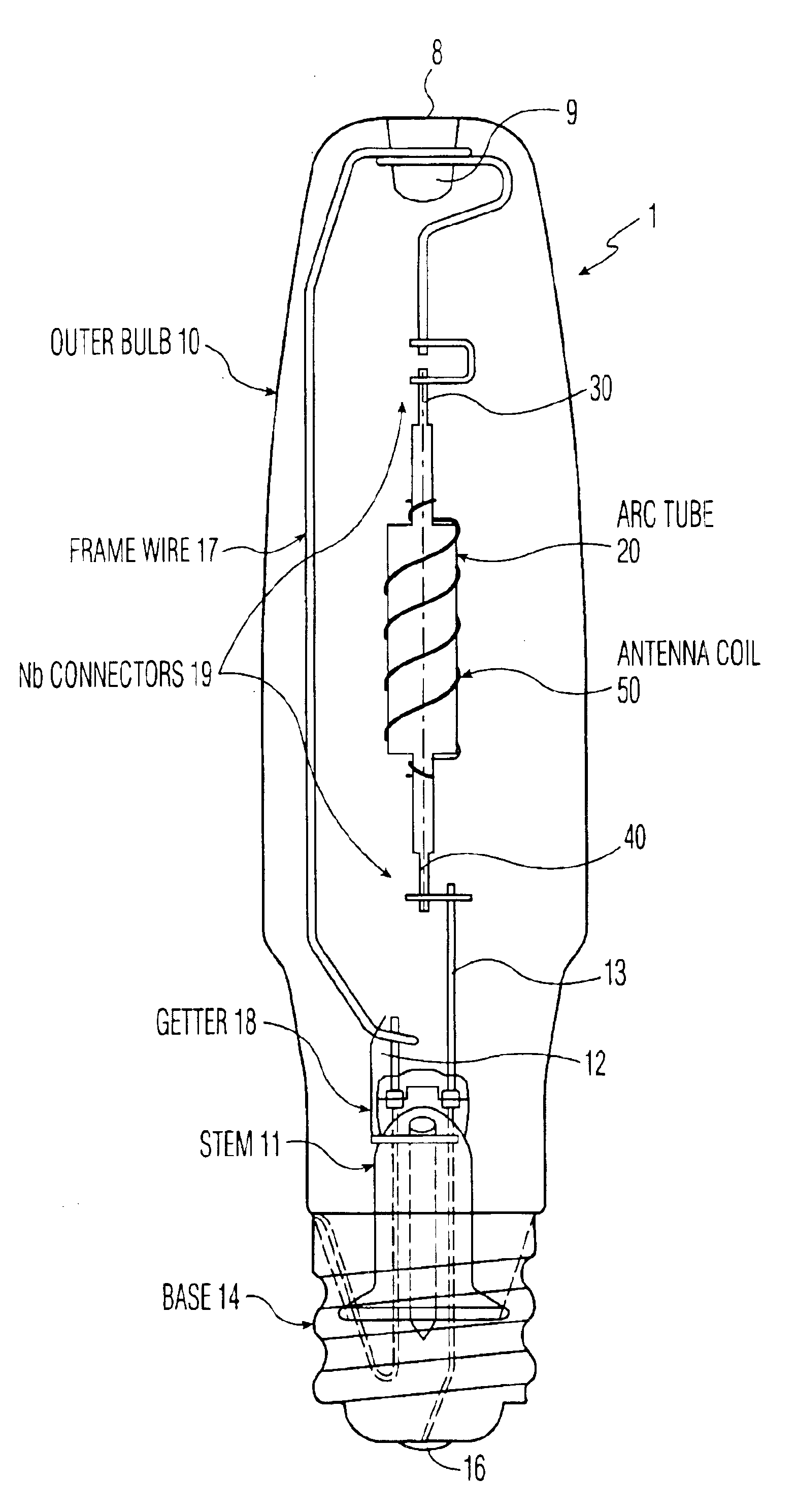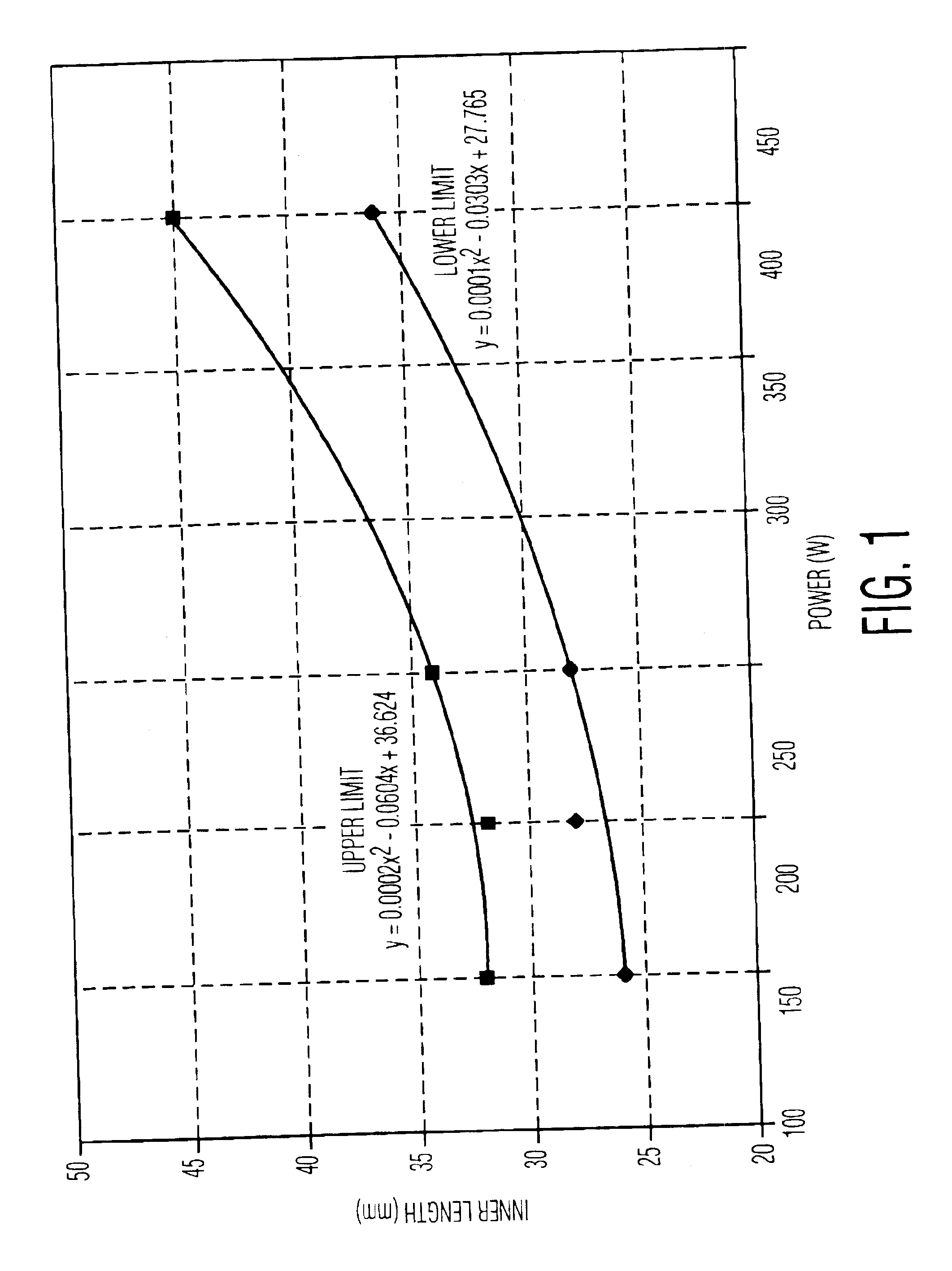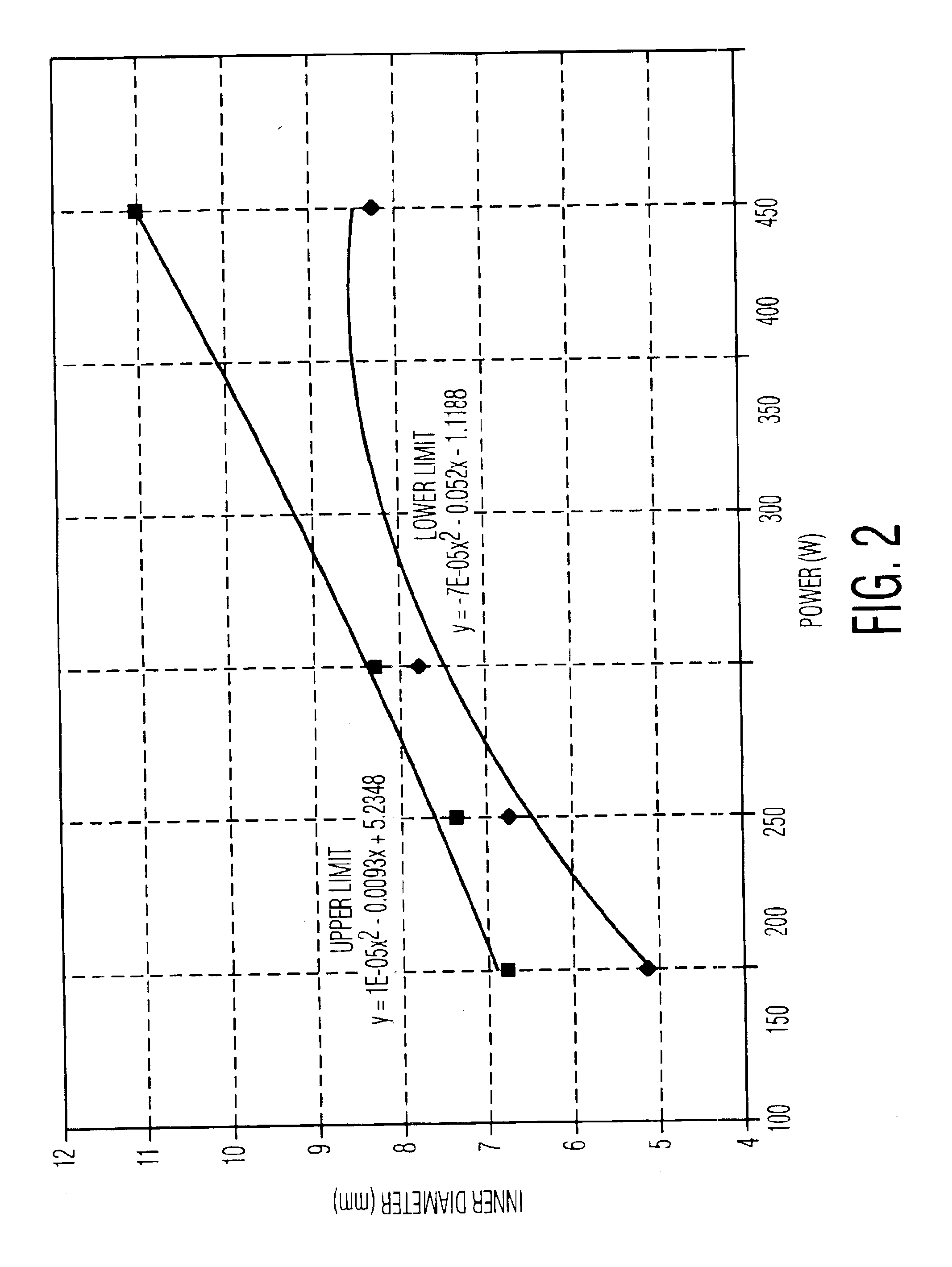Coil antenna/protection for ceramic metal halide lamps
a technology of ceramic metal halide and shielding, which is applied in the direction of transit-tube circuit elements, structural circuit elements, cathode-ray/electron beam tube circuit elements, etc., can solve the problems of limiting the lifetime of lamps to an unacceptable level, increasing the risk of premature failure, etc., and achieves excellent initial color consistency, excellent stability over life, and high luminous efficacy
- Summary
- Abstract
- Description
- Claims
- Application Information
AI Technical Summary
Benefits of technology
Problems solved by technology
Method used
Image
Examples
Embodiment Construction
Referring to FIG. 8, a ceramic metal halide discharge lamp 1 comprises a glass outer envelope 10, a glass stem 11 having a pair of conductive frame wires 12, 13 embedded therein, a metal base 14, and a center contact 16 which is insulated from the base 14. The stem leads 12, 13 are connected to the base 14 and center contact 16, respectively, and not only support the arc tube 20 but supply current to the electrodes 30, 40 via frame wire member 17 and stem lead member 13. A getter 18 is fixed to the frame wire member 17. Niobium connectors 19 provide an electrical connection for the arc tube electrode feedthroughs 30 and 40. Beyond this the frame member 17 is provided with an end portion 9 that contacts a dimple 8 formed in the upper axial end of the glass envelope 10.
FIG. 9 shows a preferred embodiment of the arc tube 20 having a four-part feedthrough in cross-section. The central barrel 22 is formed as a ceramic tube having disc-like end walls 24, 25 with central apertures which re...
PUM
| Property | Measurement | Unit |
|---|---|---|
| luminous efficacy | aaaaa | aaaaa |
| correlated color temperature | aaaaa | aaaaa |
| color rendering index | aaaaa | aaaaa |
Abstract
Description
Claims
Application Information
 Login to View More
Login to View More - R&D
- Intellectual Property
- Life Sciences
- Materials
- Tech Scout
- Unparalleled Data Quality
- Higher Quality Content
- 60% Fewer Hallucinations
Browse by: Latest US Patents, China's latest patents, Technical Efficacy Thesaurus, Application Domain, Technology Topic, Popular Technical Reports.
© 2025 PatSnap. All rights reserved.Legal|Privacy policy|Modern Slavery Act Transparency Statement|Sitemap|About US| Contact US: help@patsnap.com



